Test automation is a key factor in ensuring the quality and reliability of applications in the dynamic field of software development. However, more than merely automating tests is required; you need to assess and improve your test automation coverage.
In this article, we will delve into what test automation coverage is, why it’s crucial, and how you can enhance it, with a particular focus on utilizing Testsigma, a cutting-edge test automation tool.
Table Of Contents
What is Test Automation Coverage?
Test Automation Coverage refers to the extent to which your automated tests encompass different aspects of your application. It’s not just about the number of test cases but also about ensuring that these tests adequately cover various functionalities, features, and scenarios. In essence, it answers the question: “How much of your application is being tested via automated tests?”
Steps to Improve Automation Test Coverage
Improving test automation coverage is a multi-faceted process. Here are some steps to enhance your test automation coverage effectively:
1. Comprehensive Test Case Design
- Covering a wide range of functionalities with your test cases is the first step in your design.
- Identify critical paths and edge cases to ensure comprehensive testing.
2. Prioritize High-risk Areas
- Different parts of your application have different levels of risk that you need to measure.
- Allocate more test automation resources to high-risk areas to mitigate potential issues.
3. Regular Test Maintenance
- As your application evolves, update and maintain your test cases.
- Ensure that your automated tests remain relevant and effective.
4. Continuous Integration and Testing
- Implement a CI/CD pipeline to run automated tests with every code change.
- Solving issues early in the development cycle is important
5. Parallel Test Execution
- Speed up test runs by executing tests in parallel.
- This enables more comprehensive testing without increasing execution time.
How Do You Calculate Test Automation Coverage?
To find the automation coverage percentage, multiply the ratio of automated test cases to total test cases by 100. This formula provides a percentage that represents how much of your testing effort is automated. It’s a quick way to gauge your automation coverage.
How to Improve Automation Test Coverage with Testsigma?
Testsigma is a potent tool that enables you to increase your test automation coverage significantly. Here’s how to use Testsigma to enhance coverage:
- Efficient Test Design: Testsigma provides an intuitive interface for designing test cases, and lets you develop test cases in simple english, with no need to learn to code. Develop thorough test cases that encompass different features.
- Smart Test Maintenance: Testsigma uses AI to detect changes in your application and automatically updates test scripts, ensuring that your tests remain effective.
- Cross-Browser Testing: Test on multiple browsers and devices simultaneously to expand your coverage.
- Parallel Execution: Execute tests in parallel, saving time and allowing you to run more tests with the same resources.
Next, we will be testing a simple Weather application that has a separate frontend and backend. We will be testing the application end to end. We will see how to easily create automated tests with TestSigma.
UI Testing
- Verify that the search input field is rendered correctly on the page.
- Test that the search button is functional and triggers the weather data fetch when clicked.
- Ensure that the weather details section is displayed with the appropriate data after a successful search.
Functionality Testing
- Test the application with valid city names to verify that the weather data is fetched accurately.
- Validate the application’s behavior when an invalid or non-existent city name is entered in the search field.
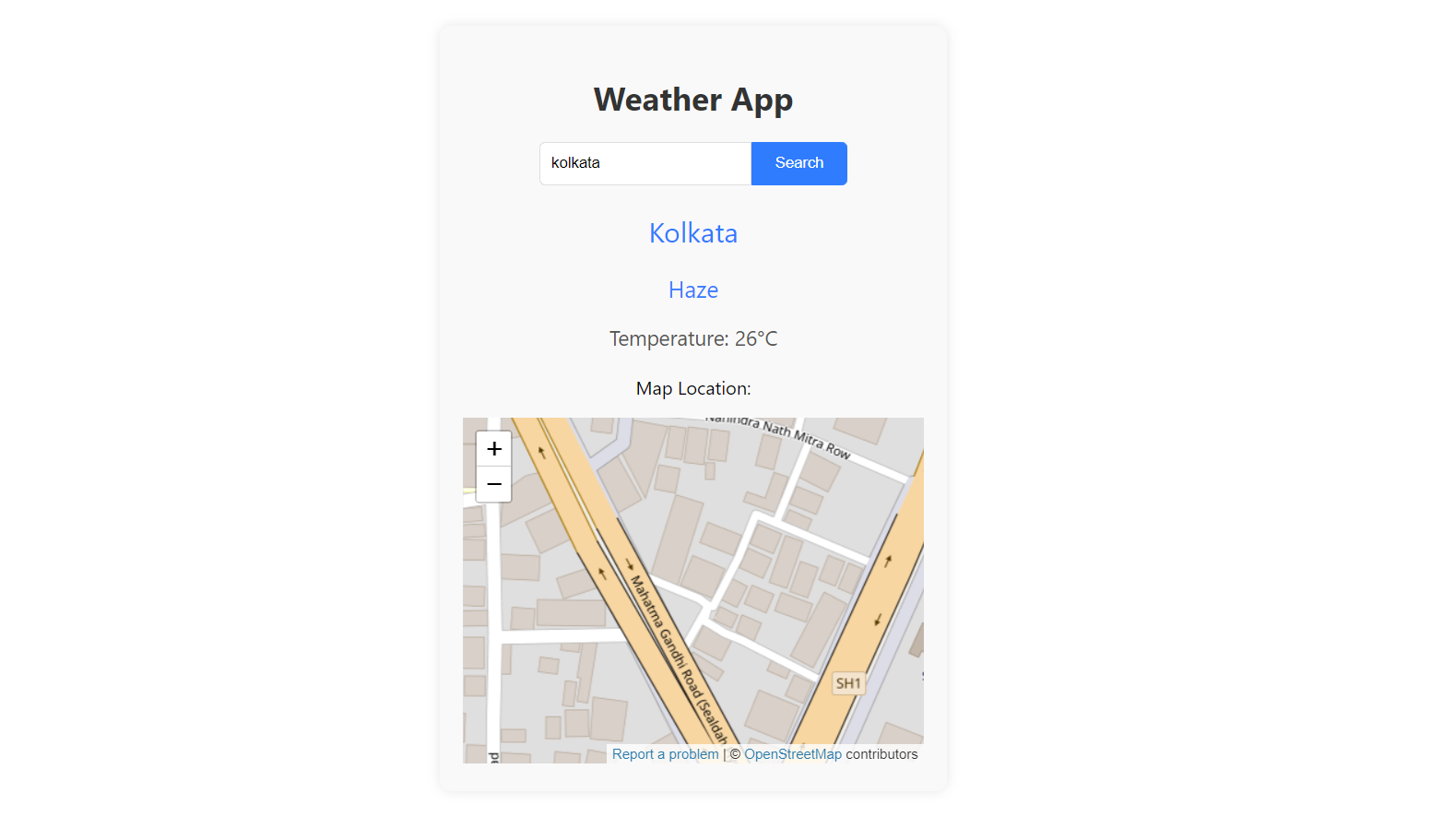
This is the application we will be testing, weather app – here. To create automated tests for this application, you can use Testsigma. Let’s start with a few automated tests for the UI:
- Test 1: Verify that the search input field is rendered correctly on the page.
- Test 2: Test that the search button is functional and triggers the weather data fetch when clicked.
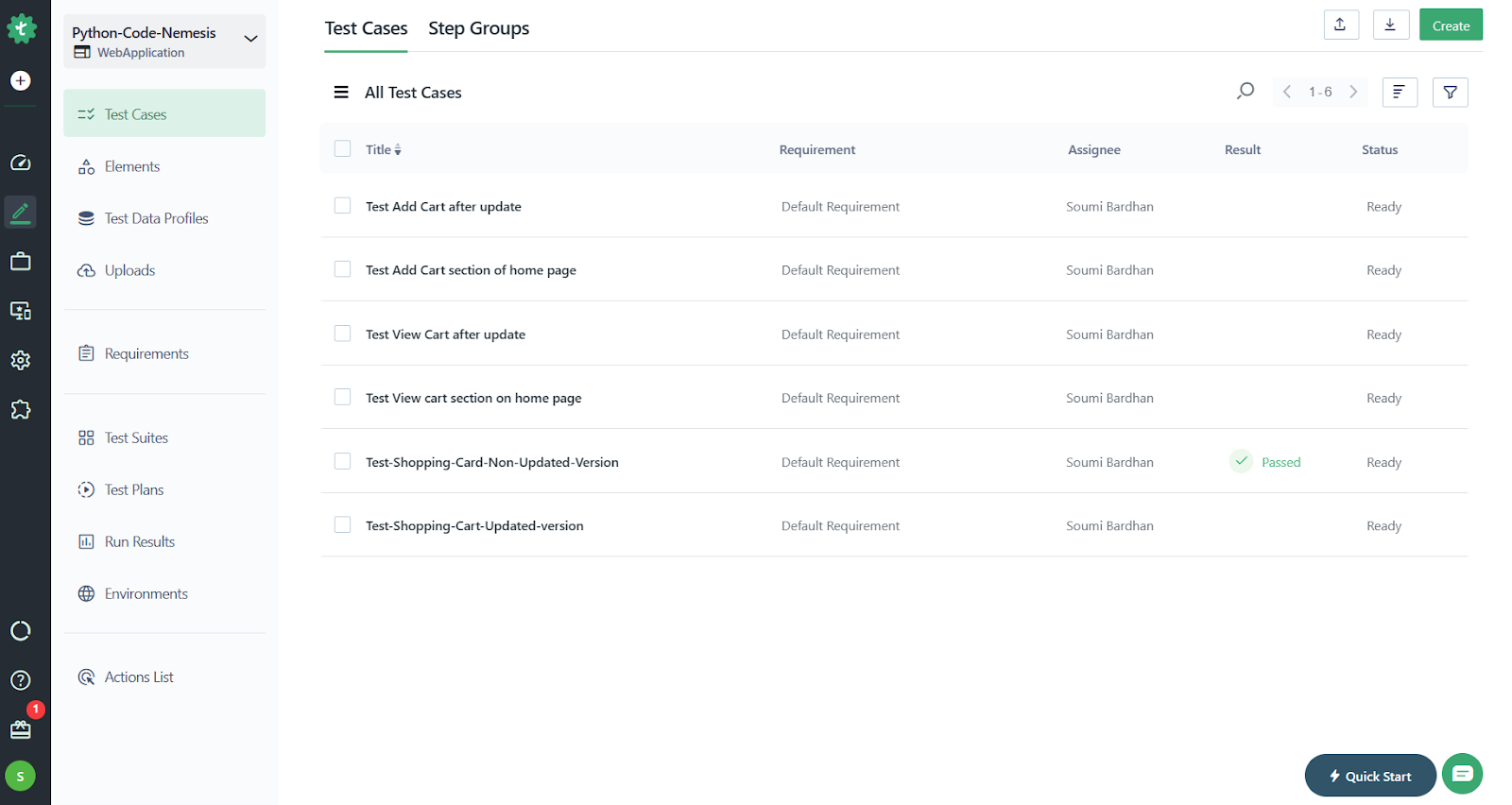
Create a new test case with the name “Verify that the search input field is rendered correctly on the page” and enter the URL of the Netlify app as the start URL.

Now enter the test steps manually or you can also record your steps:

This just tested if the page displays the correct fields and buttons. Run this test:

Once the test runs successfully, you will be able to see the details along with a screenshot:

Now we will test some functionality of the application. Let’s move on to Test2: Test that the search button is functional and triggers the weather data fetch when clicked.
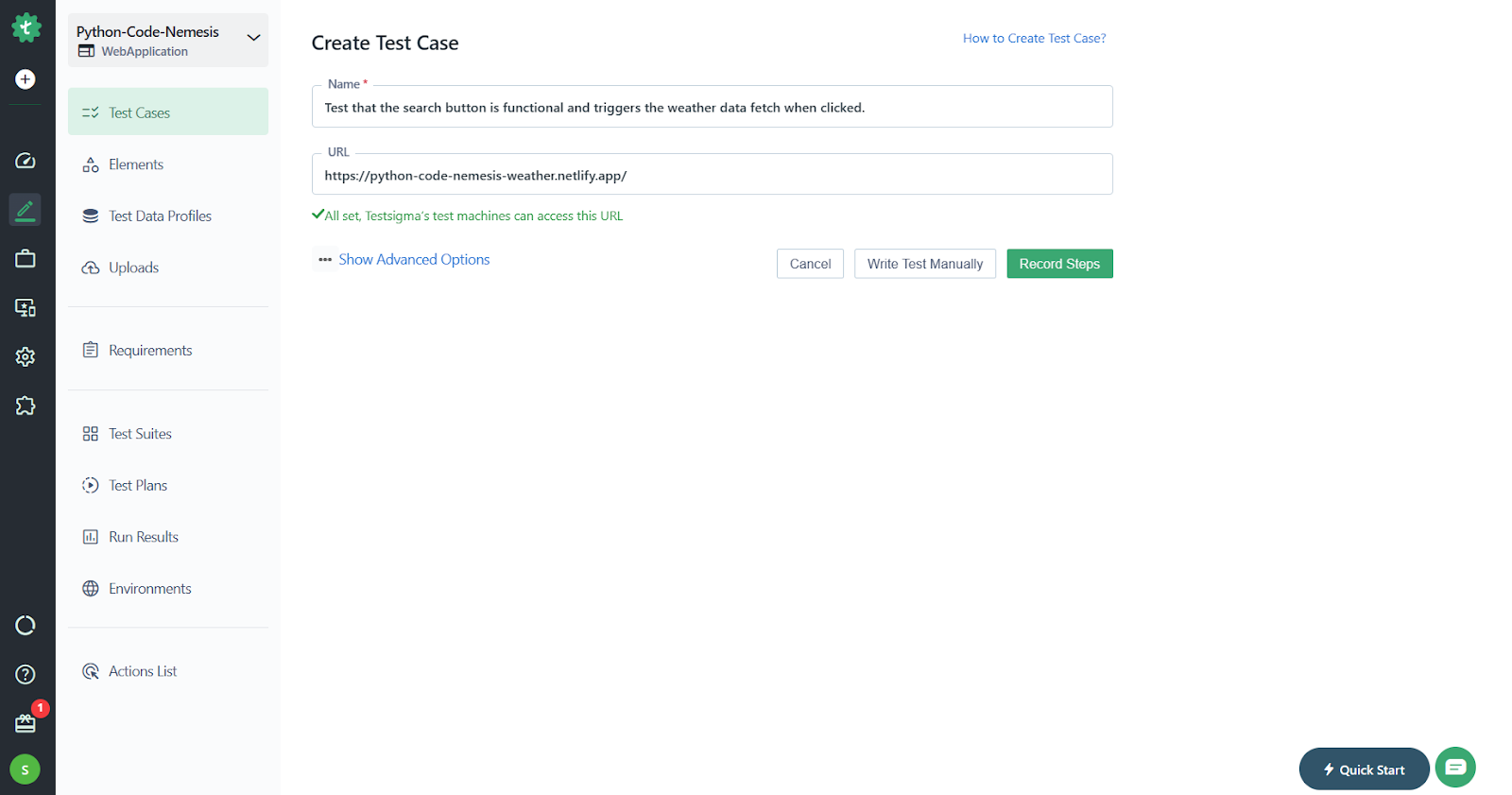
Create a new test for this scenario. Testsigma has this amazing feature where you can manually record test steps. You can interact with the UI directly and Testsigma will record the test steps, creating a new test flow.

Once you record the test steps, you will be able to see them on the screen:
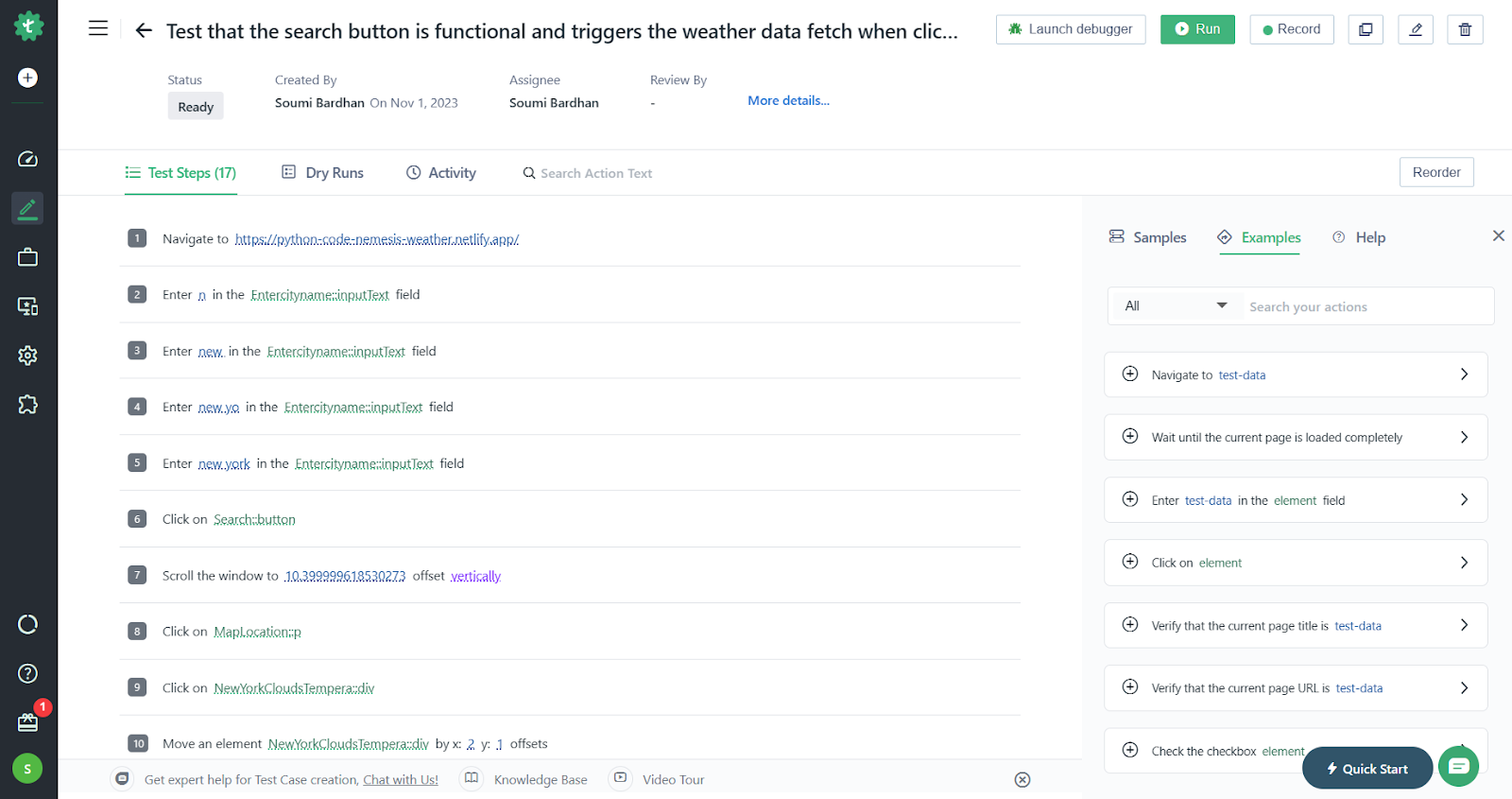
These are the steps that are generated. On the right-hand side you have awesome examples on how to write certain test steps specific to certain scenarios:
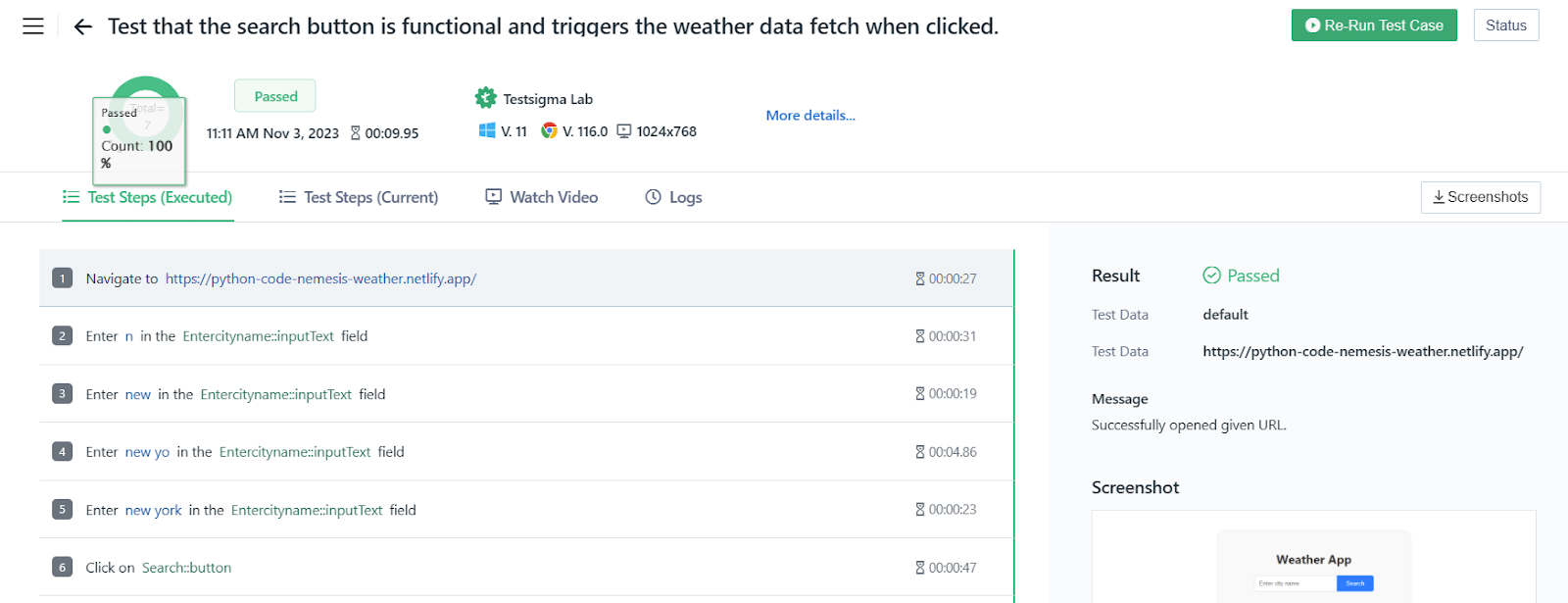
Save the test case and run it on the desired browser and device combination. You can also run it in parallel with other test cases to save time and increase coverage.
Now you want these tests to run periodically, let’s say every week. For that, you can create a Test Suite and schedule it. From the left panel, click on Test suites and create a new test suite:
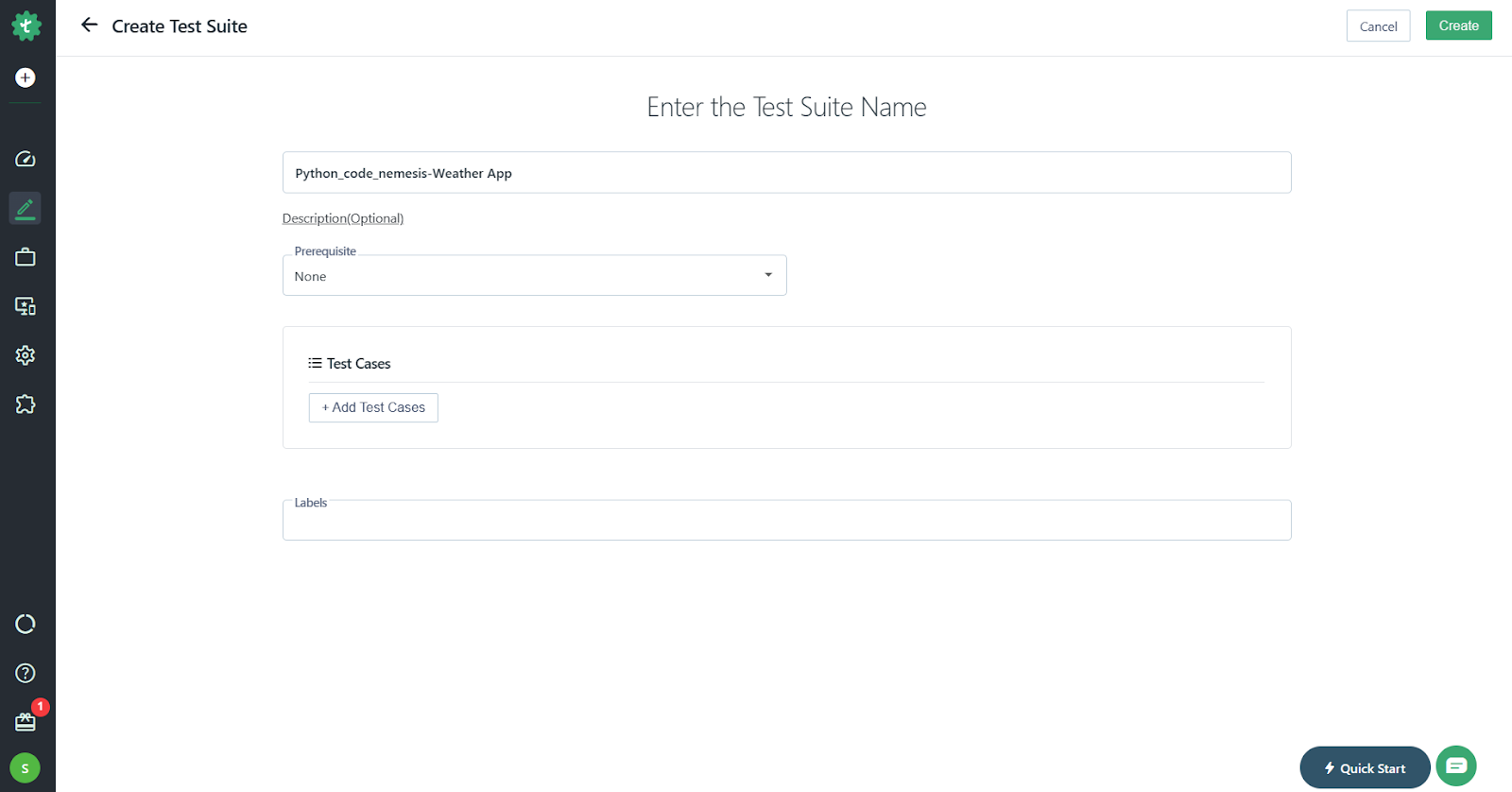
Add the test cases you created for your Weather App:
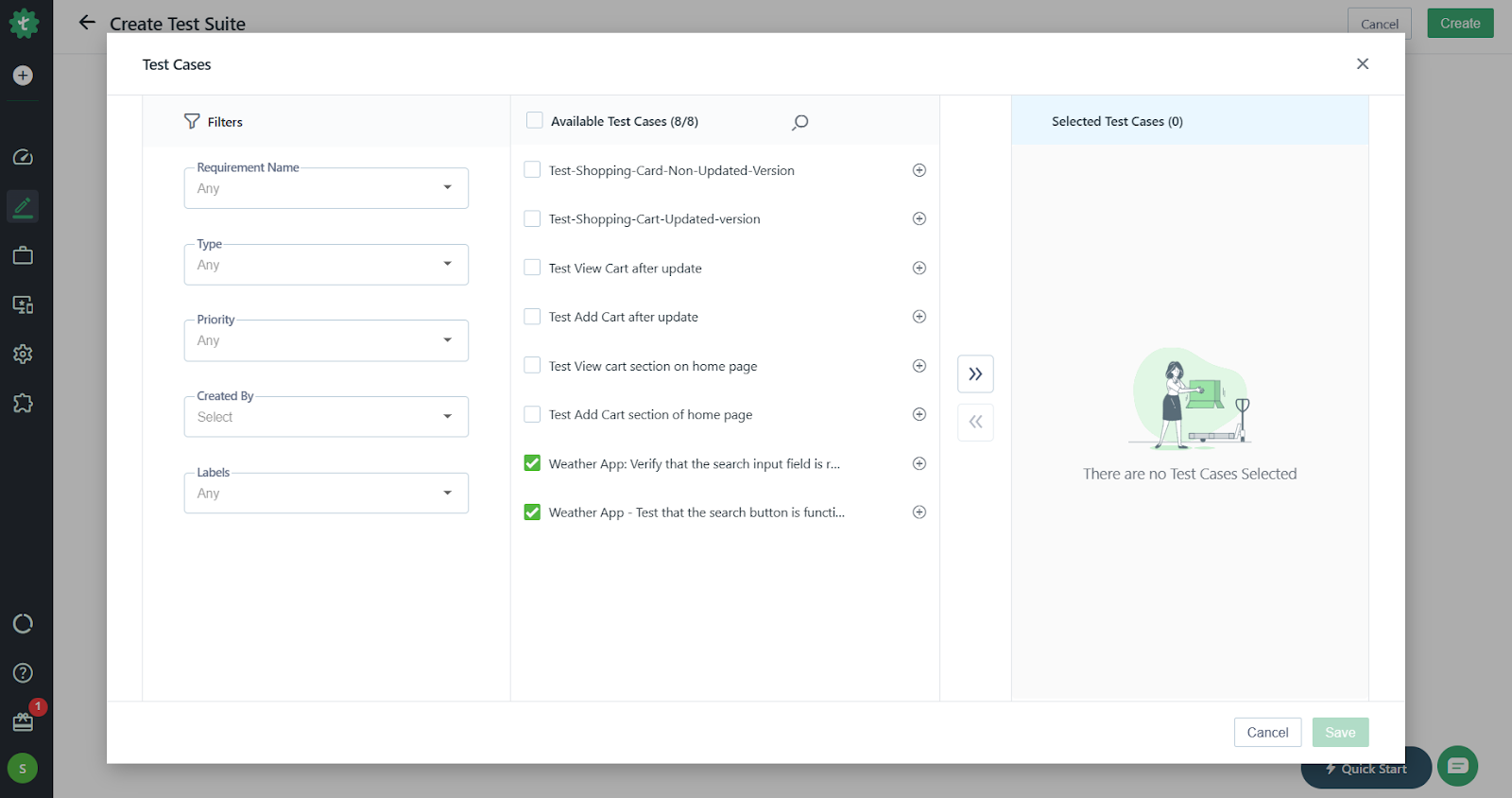
Now create a new test suite:
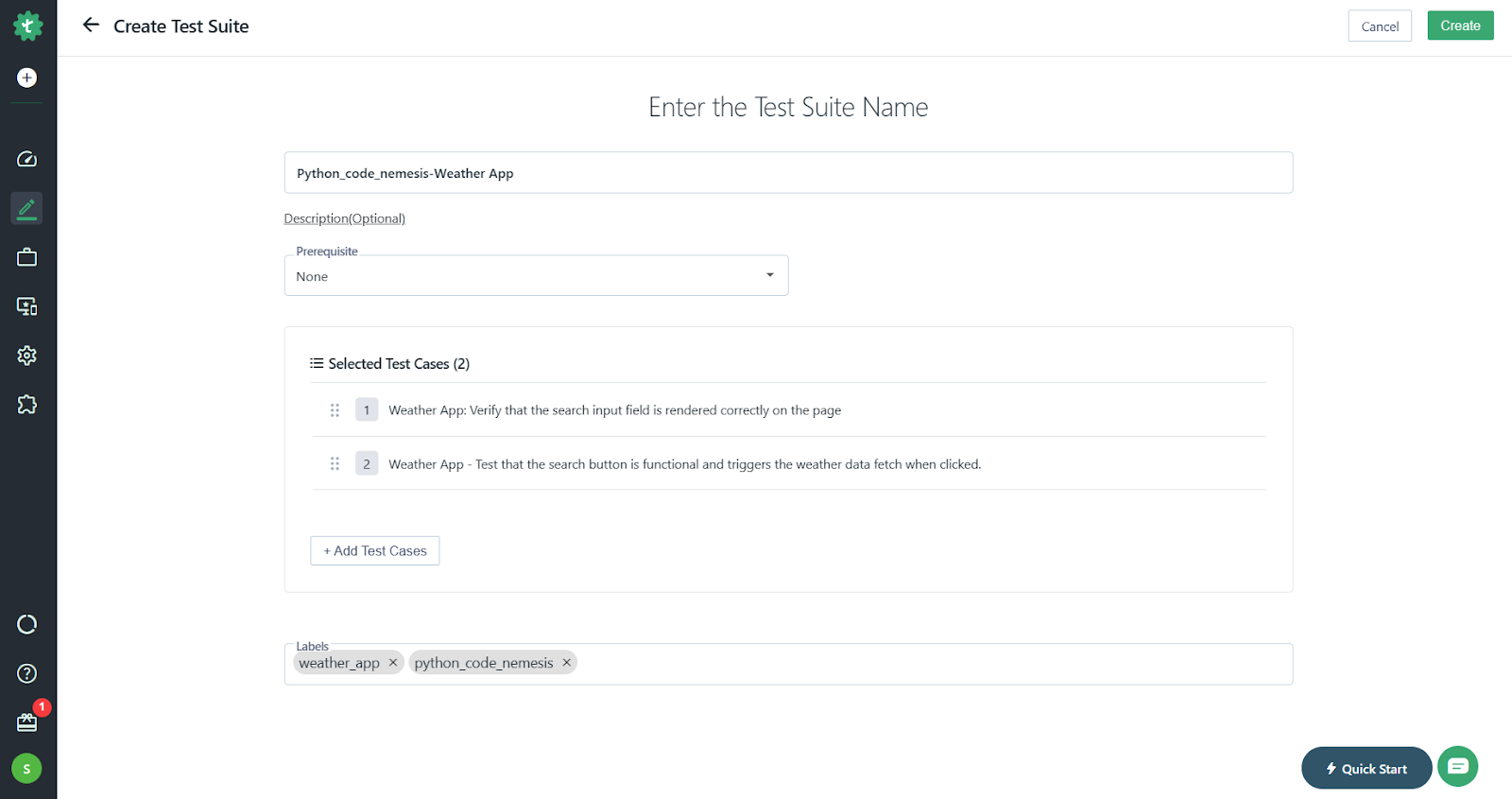
Your test suite for the Weather app is created now:
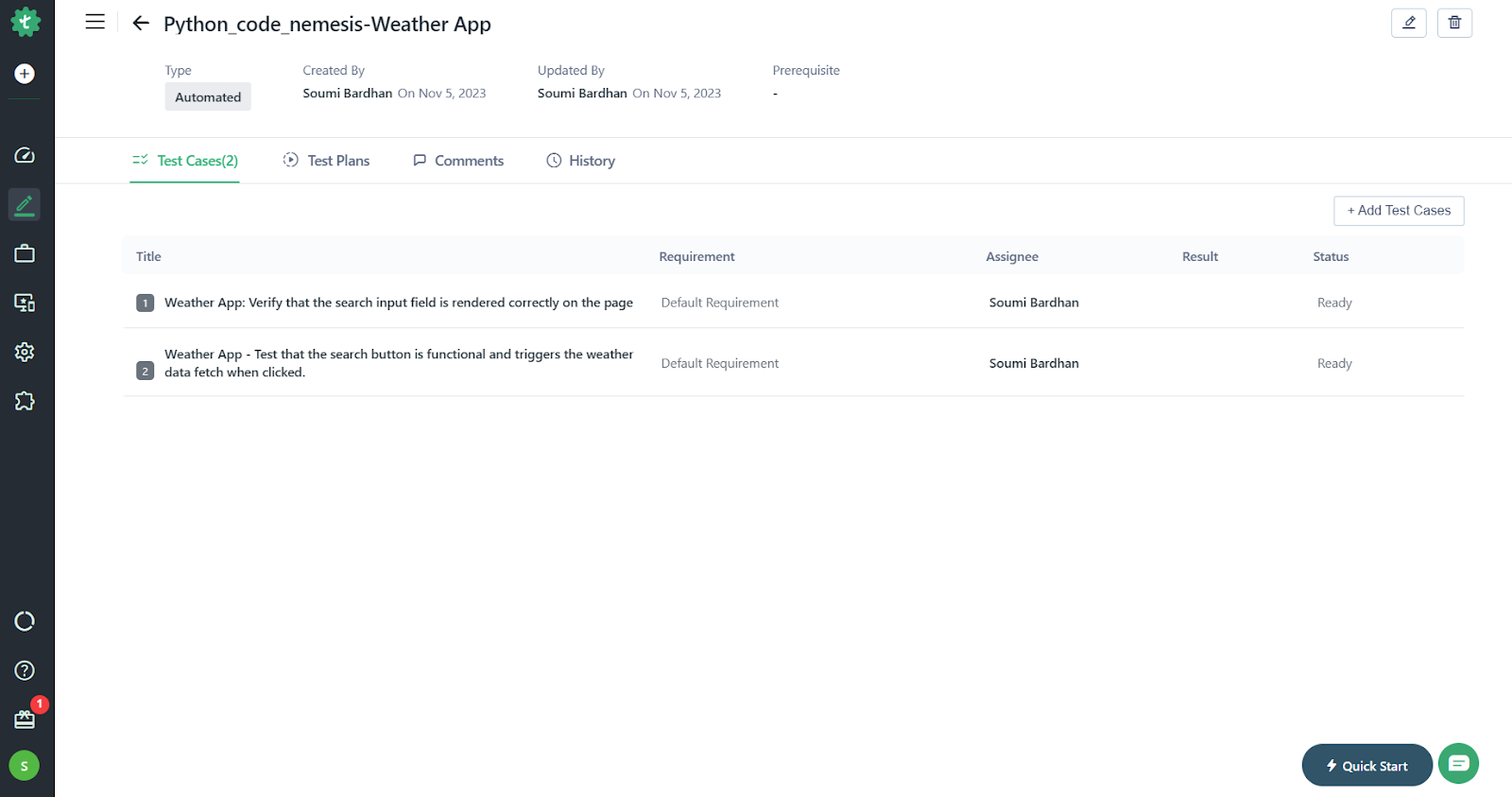
Test Plans
Create a new test plan from the “+Test Plan” button
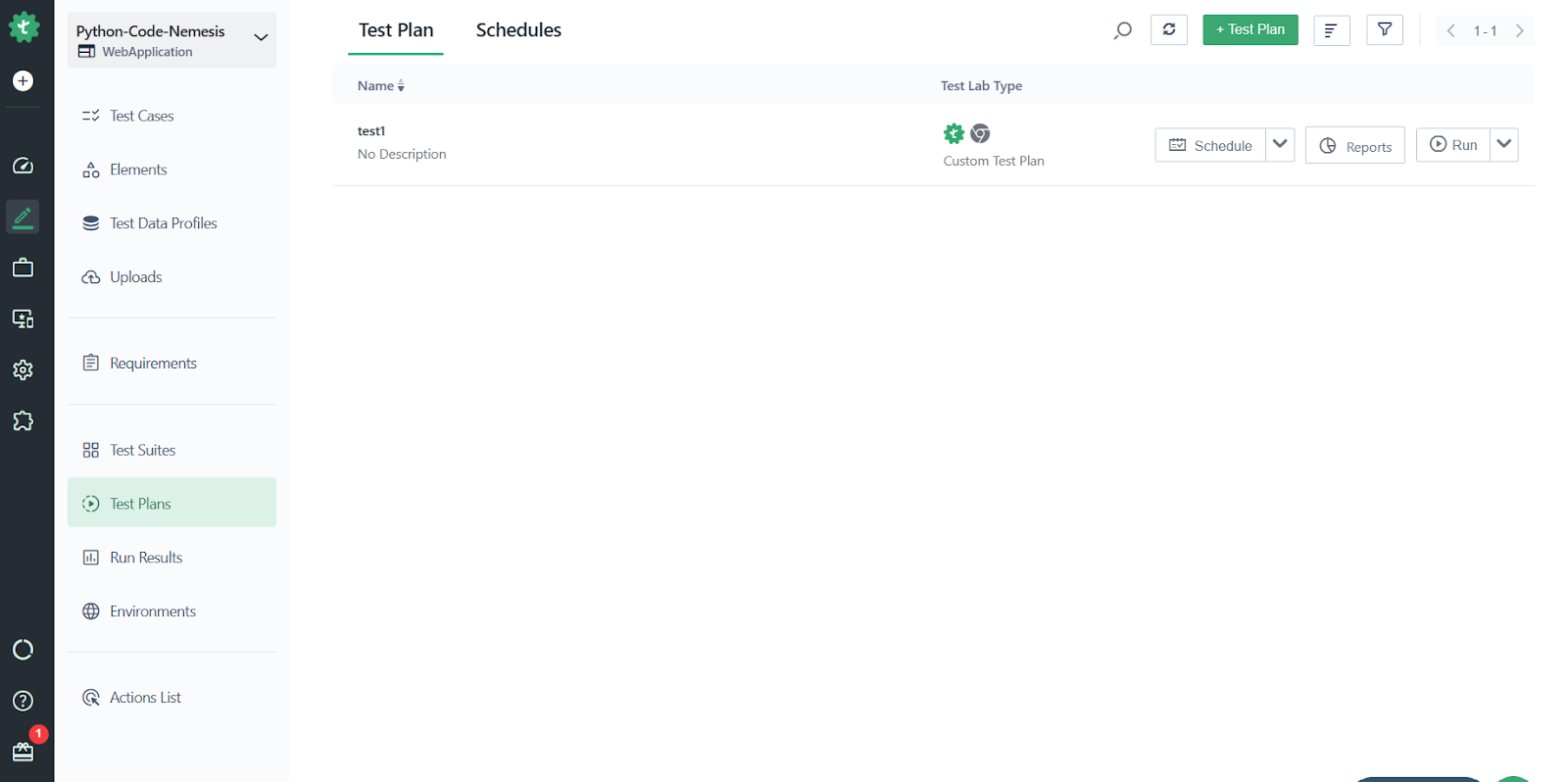
Enter the test plan details here:
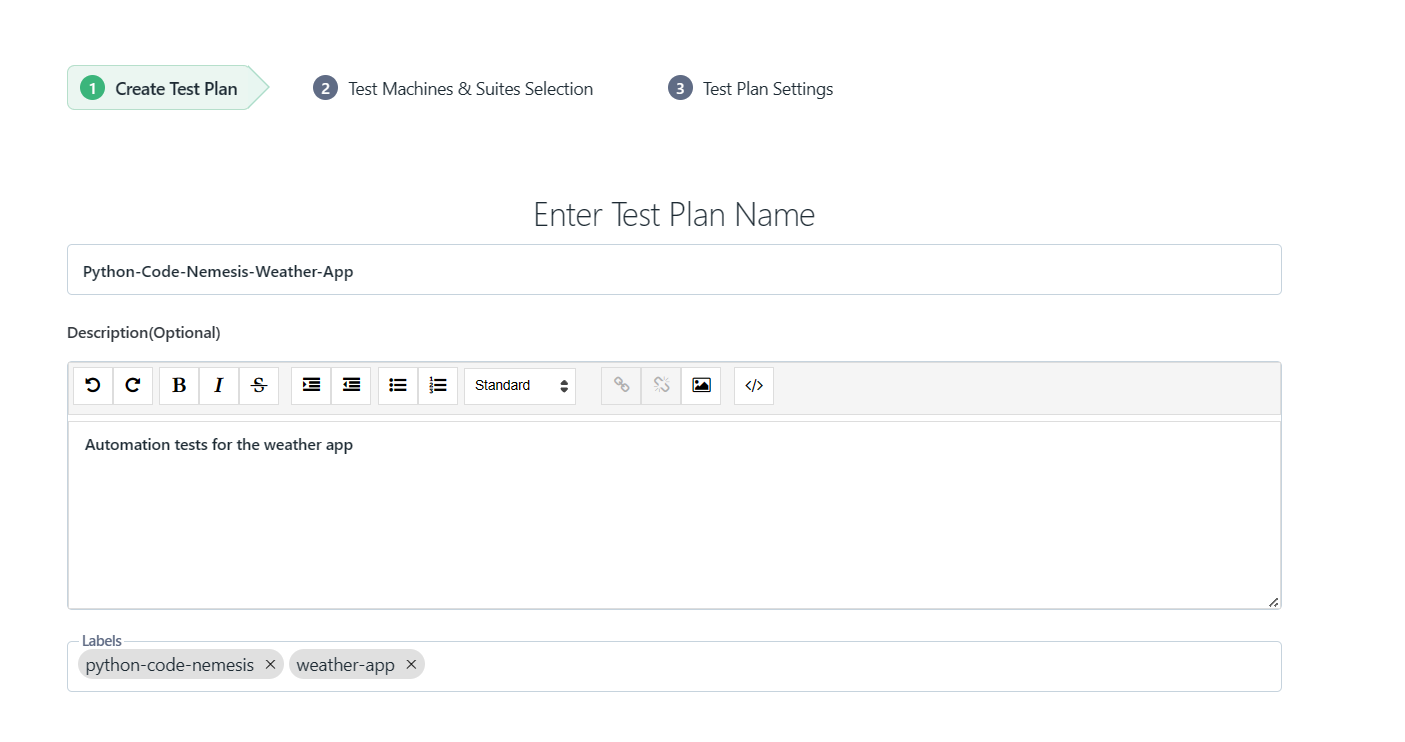
Next, select the test suites you want to add to your test plan:
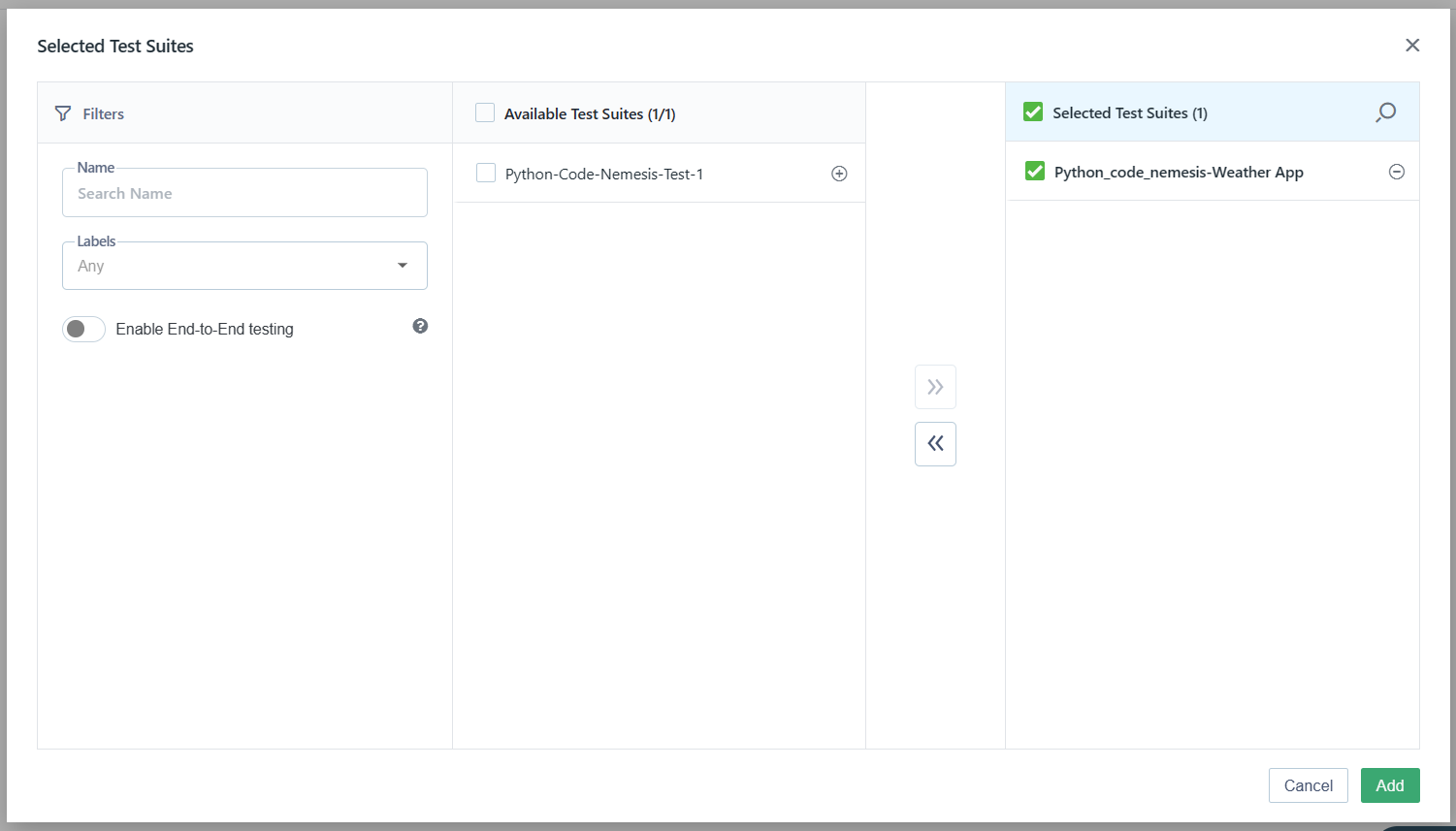
Choose the machine specifications where you want your test plan to run:
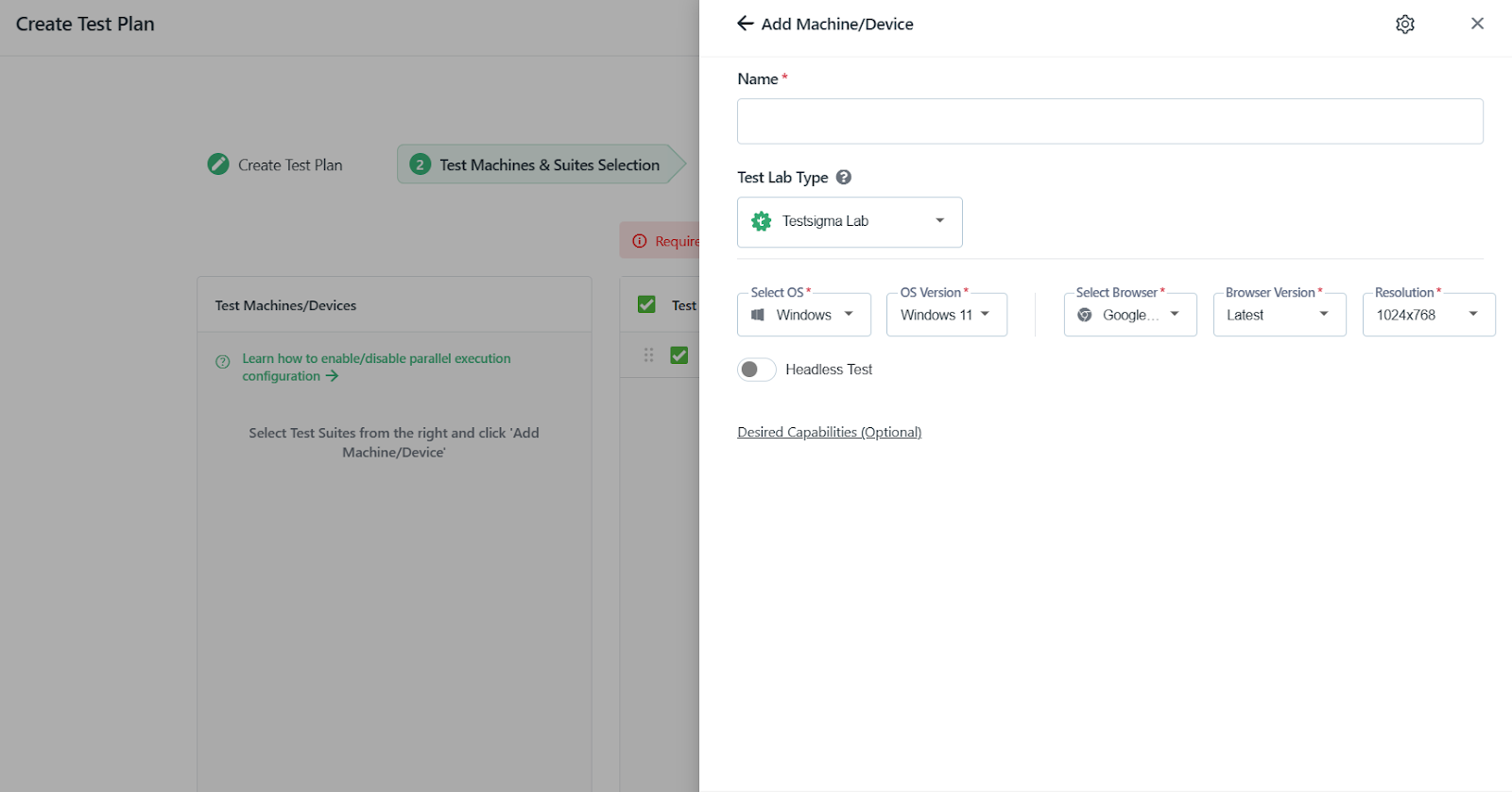
Next, specify when you need notifications and alerts:
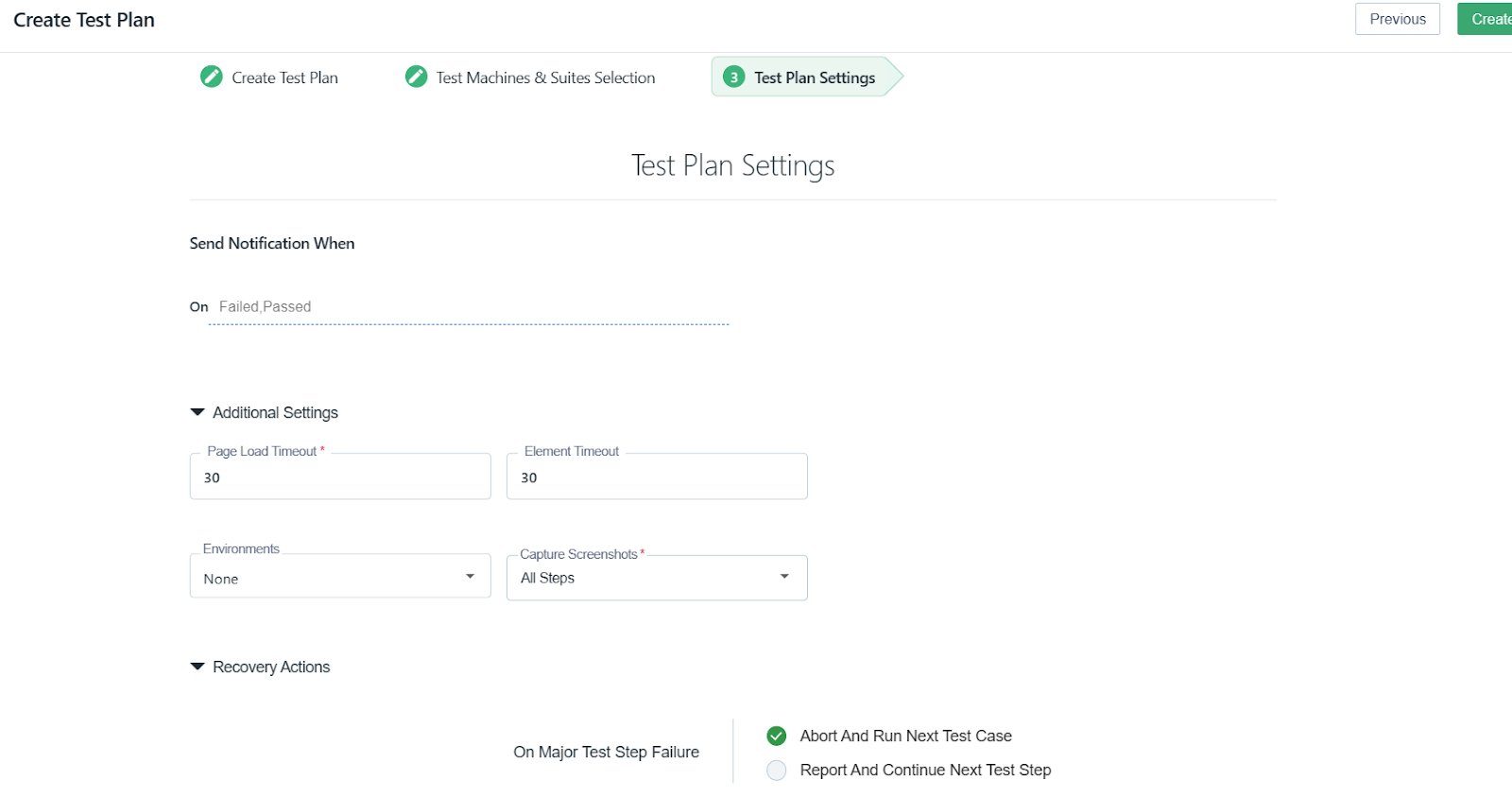
Your test plan is created successfully and running!
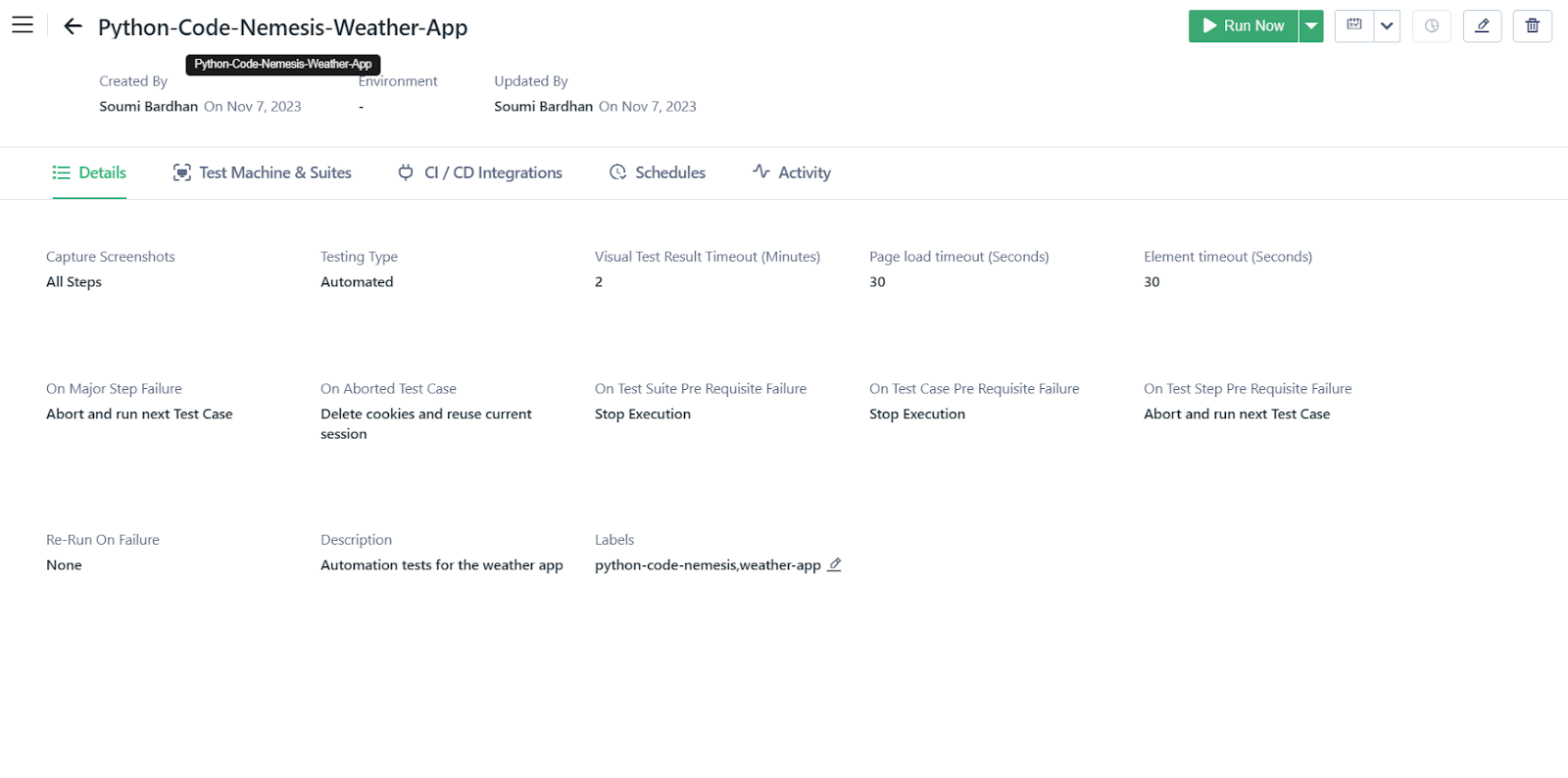
You will receive a mail on your test results periodically:
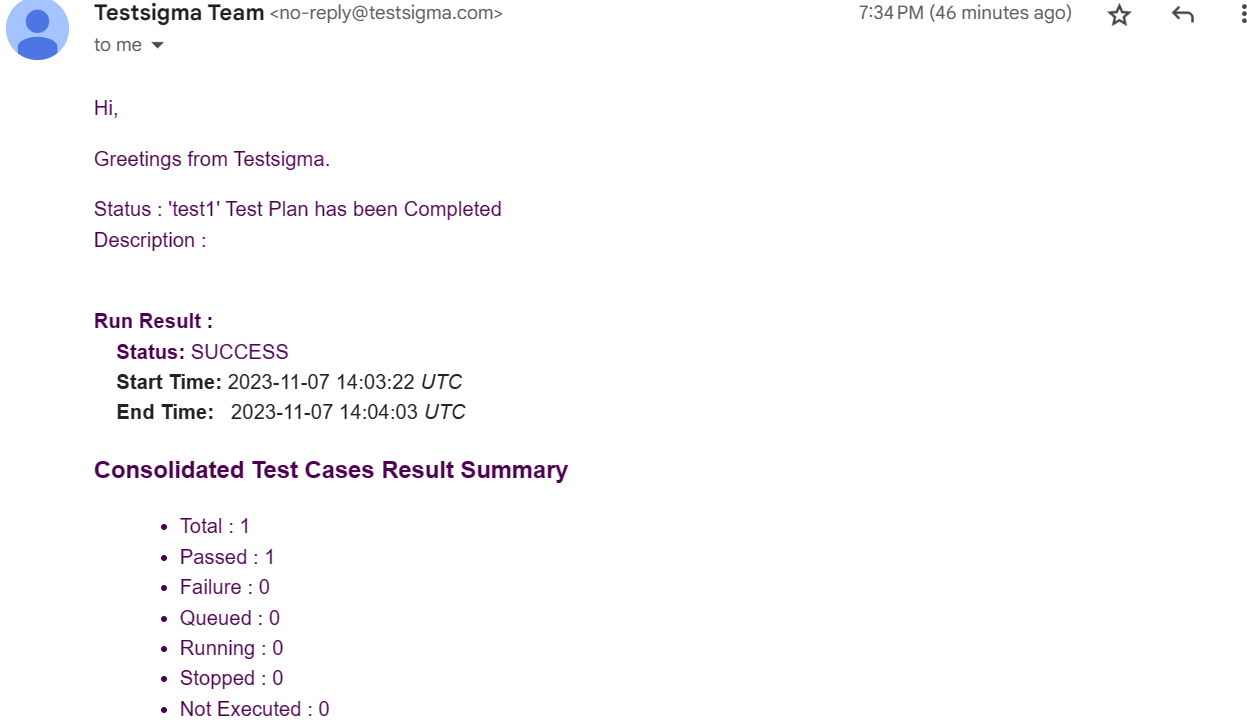
This was just two tests, you can add a lot more tests based on different scenarios. Now that your automated tests are running periodically, you don’t need to worry about unexpected failures. You are always ahead of the game. Also, integrating these tests into lower development and testing environments will help developers identify issues faster, as they don’t need manual testers to test the interface. This is where automated testing saves a lot of time and energy in the software development lifecycle.
Conclusion
Test automation is a useful technique that can increase the quality, performance, and stability of software testing. However, test automation also requires meticulous planning, designing, implementation, and upkeep to guarantee its success.
In this article, we have discussed some of the best practices and principles for test automation, steps to improve test automation coverage and designing reusable and maintainable test scripts with Testsigma. These practices can help your organization and project achieve optimal test automation coverage and deliver high-quality software products.
Frequently Asked Questions
How Do You Ensure 100% Test Coverage?
Achieving 100% test coverage is a challenging goal and may only sometimes be necessary. To get close to it:
- Prioritize critical areas.
- Use code coverage tools to identify untested code.
- Continuously update and expand your test suite.
- Implement automation for repetitive and time-consuming tests.
- Incorporate exploratory testing to catch unexpected issues.
How to Calculate Automated Test Coverage?
Automated test coverage is a measure of how much of the application code is tested by automated tests.
There are different ways to calculate automated test coverage, depending on the type and level of testing:
One common method is to use code coverage tools that can analyze the source code and report the percentage of statements, branches, conditions, or functions executed by automated tests.
Another method is to use test management tools that can track the test cases, test requirements, and test results for each feature or functionality of the application. By comparing the number of test cases executed and passed by automated tests with the total number of test cases and requirements, one can estimate the automated test coverage.










